Ischemic Myocardium Targeting Peptide-Guided Nanobubbles for Multimodal Imaging and Treatment of Coronary Microvascular Dysfunction
- PMID: 39853877
- PMCID: PMC12083440
- DOI: 10.1002/adhm.202404477
Ischemic Myocardium Targeting Peptide-Guided Nanobubbles for Multimodal Imaging and Treatment of Coronary Microvascular Dysfunction
Abstract
Coronary microvascular dysfunction (CMD) refers to clinical symptoms caused by structural and functional damage to coronary microcirculation. The timely and precise diagnosis of CMD-related myocardial ischemia is essential for improving patient prognosis. This study describes a method for the multimodal (fluorescence, ultrasonic, and photoacoustic) noninvasive imaging and treatment of CMD based on ischemic myocardium-targeting peptide (IMTP)-guided nanobubbles functionalized with indocyanine green (IMTP/ICG NBs) and characterizes their basic characteristics and in vitro imaging and targeting abilities. The IMTP/ICG NBs enable the accurate location of myocardial ischemia via photoacoustic imaging, and when loaded with tannic acid (TA), can be used to effectively treat myocardial ischemia and fibrosis in CMD mice, achieving an effect superior to that of free TA. The origin of this high therapeutic efficiency is revealed by transcriptomic and proteomic analyses. This investigation lays the groundwork for visual monitoring and the drug-targeted treatment of CMD.
Keywords: coronary microvascular dysfunction; ischemic myocardium; multimodal imaging; nanobubble; tannic acid.
© 2025 The Author(s). Advanced Healthcare Materials published by Wiley-VCH GmbH.
Conflict of interest statement
The authors declare no conflict of interest.
Figures

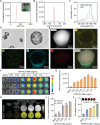
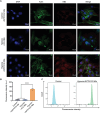



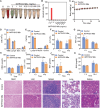

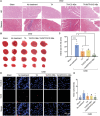
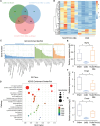
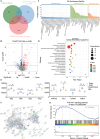
Similar articles
-
Targeted Nanobubbles Carrying Indocyanine Green for Ultrasound, Photoacoustic and Fluorescence Imaging of Prostate Cancer.Int J Nanomedicine. 2020 Jun 17;15:4289-4309. doi: 10.2147/IJN.S243548. eCollection 2020. Int J Nanomedicine. 2020. PMID: 32606678 Free PMC article.
-
Indocyanine Green-Loaded Nanobubbles Targeting Carbonic Anhydrase IX for Multimodal Imaging of Renal Cell Carcinoma.Int J Nanomedicine. 2023 May 23;18:2757-2776. doi: 10.2147/IJN.S408977. eCollection 2023. Int J Nanomedicine. 2023. PMID: 37250472 Free PMC article.
-
Multifunctional nanobubbles carrying indocyanine green and paclitaxel for molecular imaging and the treatment of prostate cancer.J Nanobiotechnology. 2020 Sep 3;18(1):121. doi: 10.1186/s12951-020-00650-1. J Nanobiotechnology. 2020. PMID: 32883330 Free PMC article.
-
Multifunctional microbubbles and nanobubbles for photoacoustic imaging.Contrast Media Mol Imaging. 2011 Sep-Oct;6(5):401-11. doi: 10.1002/cmmi.442. Contrast Media Mol Imaging. 2011. PMID: 22025340 Review.
-
Recent Advancement of Indocyanine Green Based Nanotheranostics for Imaging and Therapy of Coronary Atherosclerosis.Mol Pharm. 2024 Oct 7;21(10):4804-4826. doi: 10.1021/acs.molpharmaceut.4c00495. Epub 2024 Sep 3. Mol Pharm. 2024. PMID: 39225111 Review.
Cited by
-
Optical theranostics in ischemic heart disease: from molecular insights to clinical translation.Theranostics. 2025 Jun 9;15(14):6789-6817. doi: 10.7150/thno.114307. eCollection 2025. Theranostics. 2025. PMID: 40585968 Free PMC article. Review.
References
MeSH terms
Substances
Grants and funding
LinkOut - more resources
Full Text Sources
Research Materials
Miscellaneous

